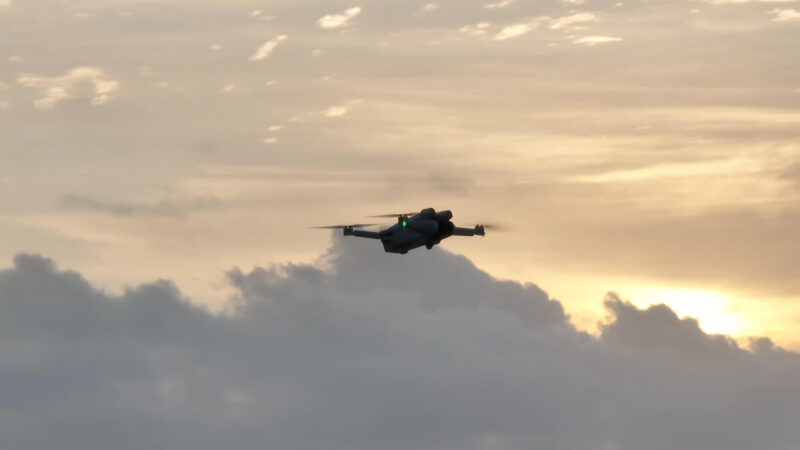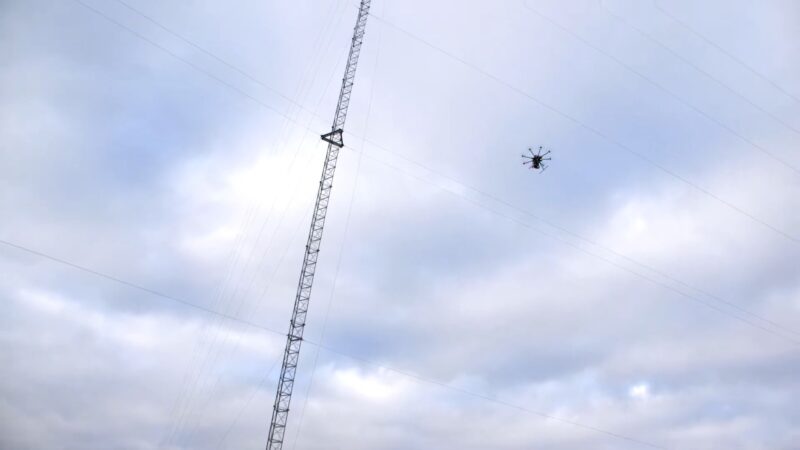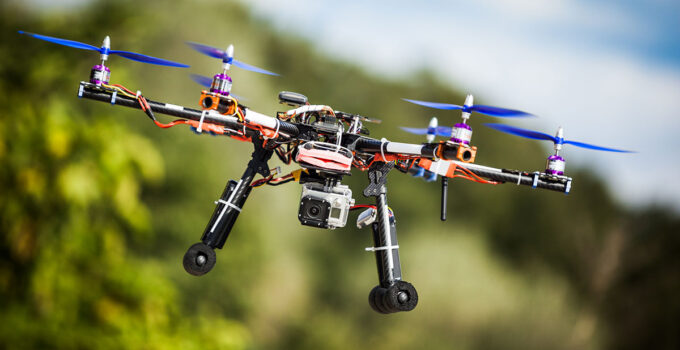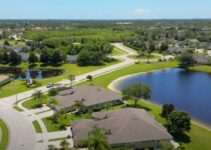The Federal Aviation Administration (FAA) sets foundational rules for drone operations. Florida state laws further define restrictions to protect privacy and critical infrastructure. Local ordinances may impose additional limitations.
Understanding and respecting these rules ensures responsible drone use and helps avoid legal issues.
Federal Drone Regulations in Florida

| FAA Registration | All drones over 0.55 pounds must be registered with the FAA. |
| Flight Altitude | Drones must be flown below 400 feet. |
| Line of Sight | Operators must maintain visual line of sight with their drone. |
| Restricted Areas | Flying near airports, over people, or moving vehicles is prohibited without authorization. |
| Drone Speed | Maximum speed is 100 mph. |
Federal regulations provide the foundation for drone operations in Florida. Registration with the FAA is required for drones weighing over 0.55 pounds.
Operators must keep their drones below 400 feet and within visual line of sight. Flying near airports or over people and moving vehicles is not allowed without specific authorization. The maximum speed for drones is 100 mph.
State Drone Laws Specific to Florida
| Unwarranted Surveillance Act | Prohibits using drones to capture images or videos of private property without consent where there is a reasonable expectation of privacy. |
| Critical Infrastructure Facility Restrictions | Bans drone flights over critical infrastructure facilities such as power plants, chemical storage facilities, and communication towers without authorization. |
| Managed Lands Regulation | Prohibits flying drones over state parks and forests without authorization from the Department of Agriculture and Consumer Services. |
| SB 92 | Limits drone use by law enforcement without a warrant, except in emergencies or with threats to public safety. |
The Unwarranted Surveillance Act makes it illegal to use drones for surveillance on private property without permission, ensuring that individuals’ privacy is respected. Critical infrastructure facilities, such as power plants and communication towers, are off-limits for drone flights without explicit permission, safeguarding these vital areas from potential threats.
Drones are also restricted from flying over managed lands like state parks and forests unless the operator has received authorization from the Department of Agriculture and Consumer Services. This measure helps protect wildlife and the natural environment.
Senate Bill 92 limits drone use by law enforcement, requiring a warrant for most surveillance activities unless there is an immediate threat to public safety. These regulations ensure a balance between the benefits of drone technology and the protection of individual privacy and safety.
Local Ordinances Impacting Drone Use

| City of Miami | Prohibits drone flights over or within a half-mile radius of large-venue events, sporting events, and specific public parks during special events without a city permit. |
| Town of Bonita Springs | Limits drone flights in Community Park to times when fields are unoccupied and prohibits flights within 25 feet of people, power lines, buildings, or light fixtures. |
| Town of Defuniak Springs | Bans drone flights over public or private property without the owner’s consent and requires commercial drone pilots to register with the local police department. |
| City of Orlando | Restricts drone use in city parks without prior approval from city authorities to ensure safety and privacy. |
Local ordinances in Florida add another layer of regulation to ensure safe and respectful drone use within communities. The City of Miami, for instance, has stringent rules that prohibit drone flights over or near large-venue events such as sporting events and specific public parks during special events. This measure helps to protect the safety of large crowds and maintain order during significant gatherings.
In the Town of Bonita Springs, drone flights in Community Park are limited to times when the fields are unoccupied. Additionally, drones must not fly within 25 feet of people, power lines, buildings, or light fixtures. This ordinance aims to prevent accidents and ensure public safety.
The Town of Defuniak Springs requires drone operators to obtain consent from property owners before flying over private or public property. Commercial drone pilots must also register with the local police department, ensuring that authorities can monitor drone activities and address any issues promptly.
In Orlando, drone use in city parks is restricted without prior approval from city authorities. This helps manage the impact of drone flights on public spaces and ensures that they do not interfere with other park activities or infringe on individuals’ privacy.
Privacy Concerns and Legal Implications
| Invasion of Privacy | Flying a drone over someone’s property and capturing images or videos without consent can be considered an invasion of privacy, potentially leading to legal action. |
| Nuisance | Drones causing noise or persistent presence over private property can be classified as a nuisance, disrupting the peaceful enjoyment of the property. |
| Trespassing | Flying a drone too low over private property without permission may be viewed as trespassing, resulting in legal consequences. |
| Surveillance Laws | Florida’s Unwarranted Surveillance Act prohibits using drones for unauthorized surveillance on private property, protecting residents’ privacy rights. |
Privacy concerns are significant when it comes to drone operations over private property. An invasion of privacy occurs when a drone captures images or videos without the owner’s consent. This can lead to legal actions against the drone operator for violating the privacy of individuals within their private spaces.
Drones can also be considered a nuisance if they create excessive noise or hover persistently over someone’s property. This can disrupt the peaceful enjoyment of the property and lead to complaints or legal disputes.
Trespassing is another concern. Flying a drone too low over someone’s property without permission may be seen as an intrusion, akin to physical trespassing. This can result in legal repercussions, especially if the drone causes any damage or disturbance.
Florida’s Unwarranted Surveillance Act provides additional protection by prohibiting unauthorized surveillance using drones. This law ensures that individuals’ privacy rights are upheld and that drones are not used to spy on private activities without proper authorization.
Critical Infrastructure Restrictions

| Prohibited Areas | Drones are not allowed to fly over critical infrastructure facilities such as power plants, chemical storage facilities, and communication towers without explicit permission. |
| Legislative Definition | Critical infrastructure facilities are defined as areas enclosed by a fence or marked with signs indicating restricted access to protect against intrusions. |
| Legal Repercussions | Violating these restrictions can lead to severe penalties, including fines and potential confiscation of the drone. |
Flying drones over critical infrastructure in Florida is strictly regulated to ensure safety and security. Drones are prohibited from flying over critical infrastructure facilities such as power plants, chemical storage facilities, and communication towers without explicit permission. This restriction aims to protect vital facilities from potential threats and disruptions.
The legislative definition of critical infrastructure facilities includes any area enclosed by a fence or marked with signs indicating restricted access. These measures are put in place to prevent unauthorized intrusions and ensure the security of essential services.
Legal repercussions for violating these restrictions can be severe. Drone operators found flying over critical infrastructure without permission can face significant fines and the potential confiscation of their drones. Adhering to these regulations is crucial for maintaining the safety and integrity of critical infrastructure facilities in Florida.
Guidelines for Recreational Drone Use
| Registration | Drones weighing over 0.55 pounds must be registered with the FAA. |
| Flight Altitude | Drones must be flown below 400 feet to avoid interference with manned aircraft. |
| Visual Line of Sight | Operators must keep the drone within their visual line of sight at all times. |
| Safety Test | Recreational drone operators must pass the TRUST (The Recreational UAS Safety Test) to ensure they understand safety and regulatory information. |
| Permitted Areas | Drones should only be flown in areas where it is legally allowed, avoiding restricted zones such as near airports and crowds. |
Recreational drone use in Florida requires adherence to specific guidelines to ensure safety and compliance with regulations. All drones weighing over 0.55 pounds must be registered with the FAA, a process that helps maintain accountability and track drone usage.
Drones must be flown below 400 feet to prevent interference with manned aircraft. This altitude limit is a critical safety measure to avoid potential collisions and ensure safe airspace for all users.
Operators are required to keep their drones within visual line of sight at all times. This rule ensures that operators can maintain control over their drones and respond to any potential hazards quickly.
Recreational drone operators must pass the TRUST (The Recreational UAS Safety Test), which provides education on important safety and regulatory information. This test is mandatory and ensures that all recreational flyers are aware of the rules and guidelines governing drone use.
Steps to Address Drones Over Your Property
If a drone is hovering over your property, follow these steps to address the situation effectively:
- Document the Drone: Take photos or videos of the drone to capture its appearance and any identifiable features. This documentation can be useful if you need to report the incident to authorities.
- Identify the Operator: Look for the drone operator nearby. If you can safely approach them, discuss your concerns politely and request that they avoid flying over your property. This direct approach often resolves the issue amicably.
- Contact Authorities: If the drone continues to be a nuisance or invades your privacy, contact local law enforcement. Provide them with the documentation you have gathered and explain the situation. Authorities can intervene and take appropriate action if necessary.
- Report to FAA: If the drone is not following FAA rules, report the incident to the FAA. The FAA can investigate and address violations of drone regulations, ensuring that operators adhere to safety and privacy standards.
- Consult Legal Advice: If the issue persists and disrupts your privacy or property, consider consulting with an attorney. Legal advice can help you understand your rights and explore potential legal actions to protect your property and privacy.
Last Words
For property owners, knowing their rights is essential. If a drone intrudes on their space, they should document the incident, communicate with the operator, or contact authorities as needed. By following these guidelines, operators can use drones responsibly, and property owners can protect their rights. Adhering to regulations promotes a safer environment for all involved.




